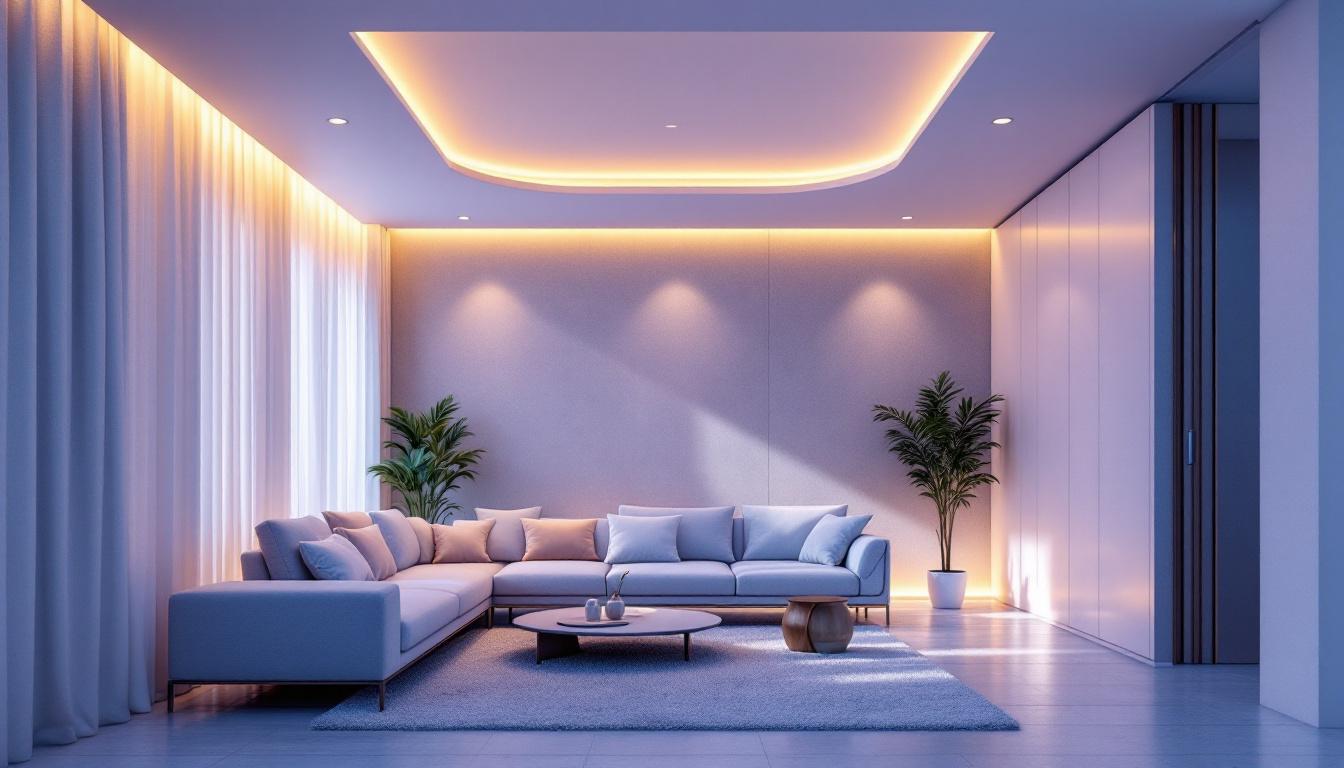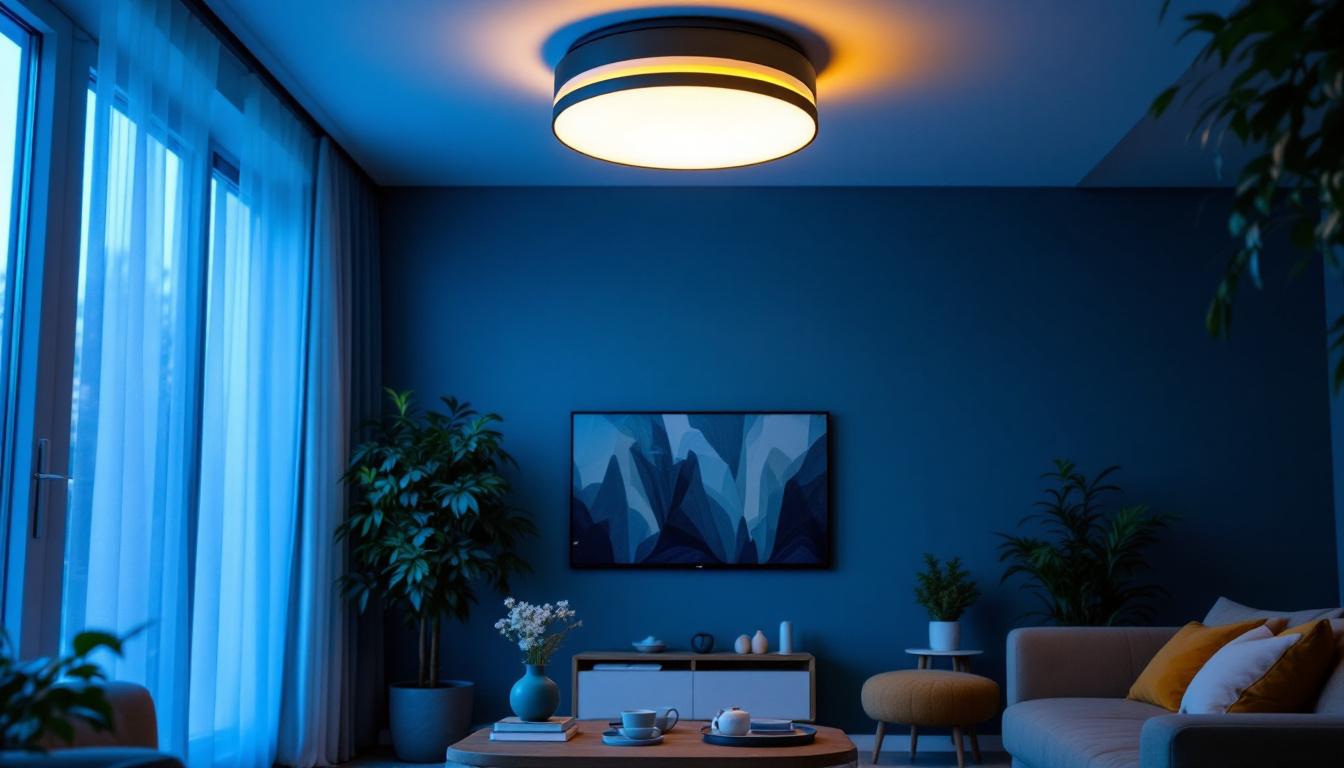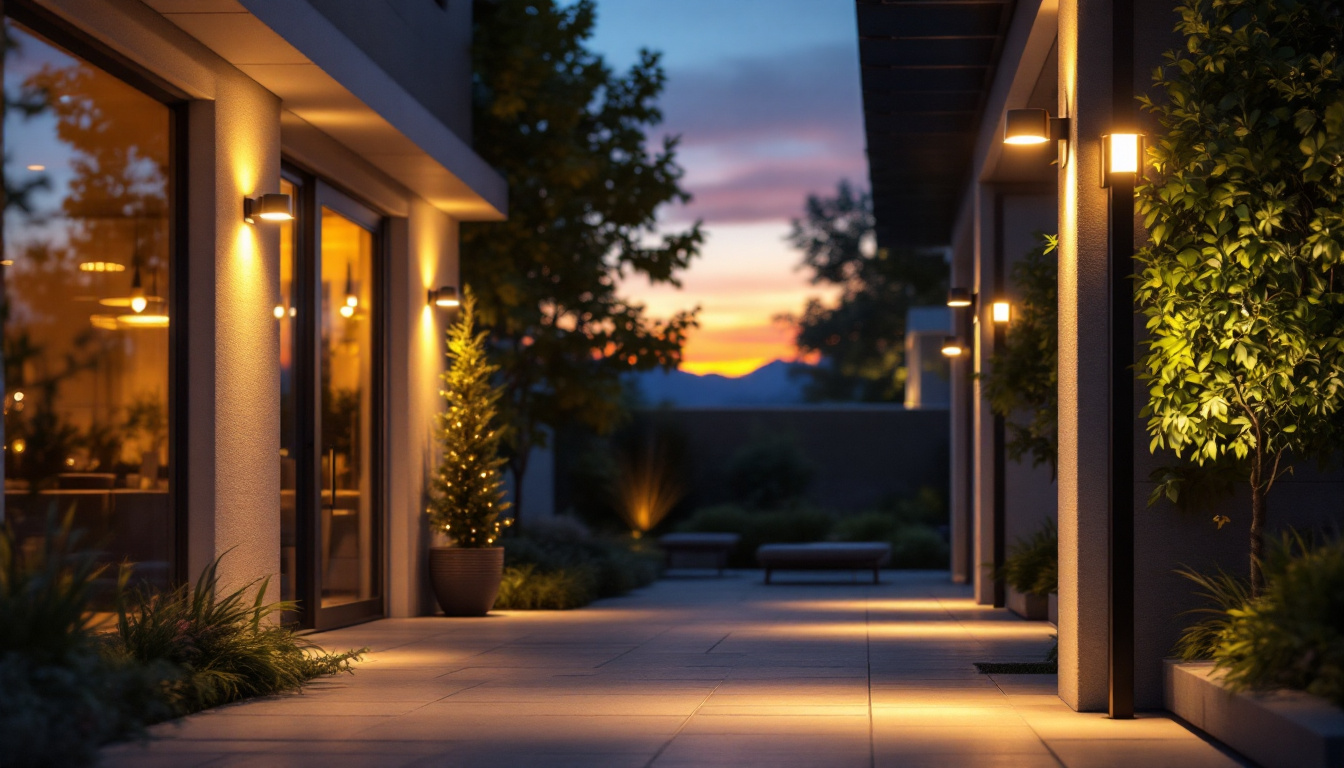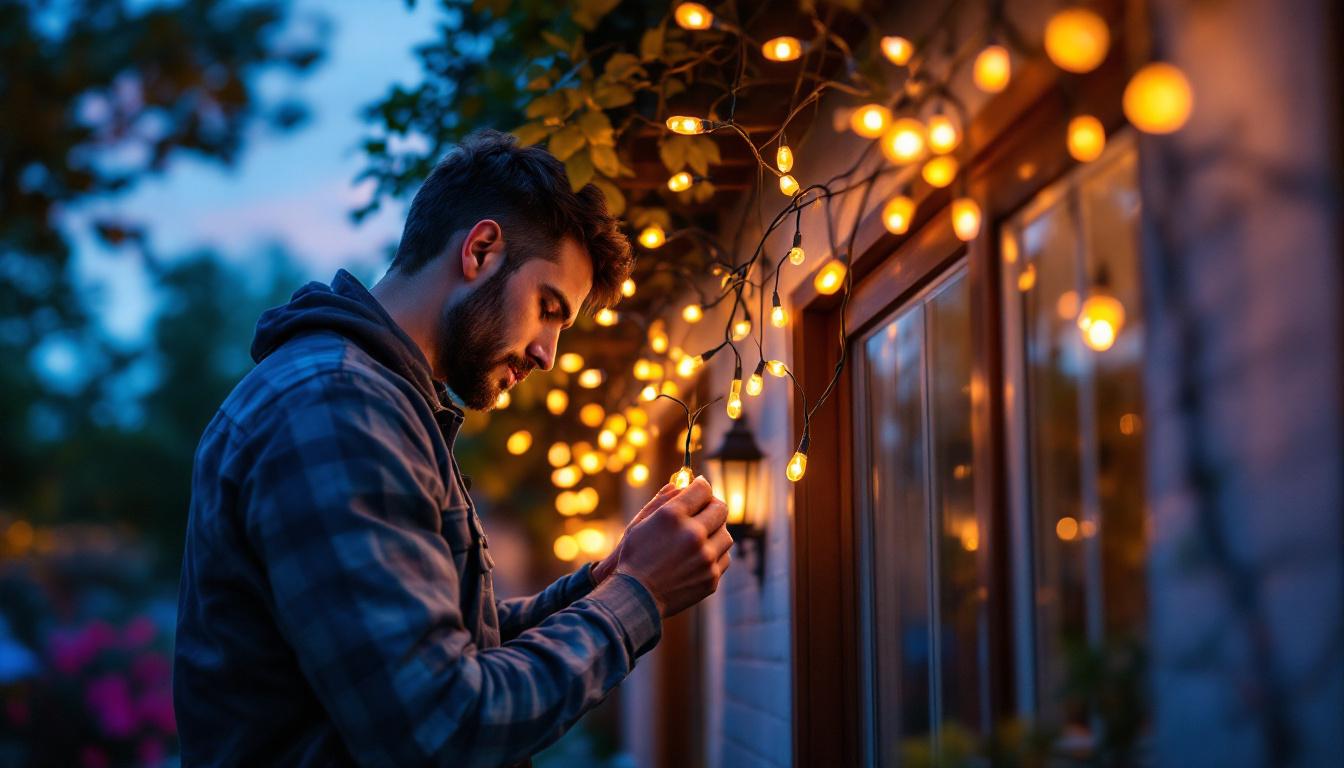
As the demand for energy-efficient lighting solutions continues to rise, LED recessed can lighting has emerged as a popular choice among homeowners and commercial property owners alike. For lighting contractors, understanding the nuances of LED recessed can lighting is essential for delivering quality installations and meeting client expectations. This article delves into the critical aspects of LED recessed can lighting, providing insights that every lighting contractor should know.
LED recessed can lighting, often referred to as “downlights,” is a type of lighting fixture that is installed into a hollow opening in the ceiling. This design allows the fixture to be flush with the ceiling, creating a sleek and unobtrusive look. The use of LEDs in these fixtures offers several advantages over traditional incandescent or fluorescent options, making them an attractive choice for various applications.
One of the most significant advantages of LED technology is its energy efficiency. LED lights consume significantly less power than traditional bulbs, leading to lower energy bills for homeowners and businesses. Additionally, LEDs have a longer lifespan, often lasting up to 25,000 hours or more, which reduces the frequency of replacements and maintenance costs.
Another benefit is the quality of light produced by LEDs. They provide bright, clear illumination with excellent color rendering capabilities. This is particularly important in settings where accurate color representation is crucial, such as art galleries or retail spaces. Furthermore, many LED fixtures offer adjustable color temperatures, allowing contractors to tailor the lighting to the specific needs of a space. This flexibility can enhance the ambiance of a room, making it feel warmer or cooler depending on the desired effect.
LED recessed can lights come in various styles and configurations, catering to different aesthetic preferences and functional requirements. Some common types include:
In addition to these common types, there are also specialized LED recessed lights designed for specific applications. For instance, wet-rated recessed lights are perfect for areas exposed to moisture, such as bathrooms or outdoor patios, ensuring safety and durability in challenging environments. Moreover, smart LED recessed lights are gaining popularity, allowing users to control brightness and color through smartphone apps or voice commands, offering a modern twist to traditional lighting solutions.
When selecting LED recessed can lights, it is essential to consider the beam angle, which affects how light is distributed in a space. A narrow beam angle is ideal for focused lighting, while a wider beam angle can create an ambient glow, effectively illuminating larger areas. Additionally, dimmable options are available, providing further versatility in adjusting light levels according to the time of day or specific activities, enhancing both functionality and comfort in residential and commercial settings.
Proper installation is crucial to the performance and longevity of LED recessed can lighting. Lighting contractors must be aware of several key factors during the installation process.
Before installation, it’s essential to consider the type of ceiling where the recessed lights will be placed. Different ceiling materials, such as drywall, plaster, or wood, may require specific mounting techniques. Additionally, the space above the ceiling must be evaluated to ensure there is enough room for the can housing and any necessary wiring.
Contractors should also take into account the spacing of the fixtures. A general rule of thumb is to space recessed lights about 4 to 6 feet apart, but this can vary based on the height of the ceiling and the desired lighting effect. Proper spacing not only enhances the aesthetic appeal but also ensures even illumination throughout the area. Furthermore, the placement of the lights should be strategically planned to avoid shadows and highlight key features of the room, such as artwork or architectural details. For instance, in a kitchen, placing lights directly above work areas can significantly improve visibility and functionality.
Electrical wiring is a critical aspect of installing LED recessed can lights. Contractors must adhere to local electrical codes and regulations, ensuring that the wiring is adequate for the load of the LED fixtures. It’s advisable to use a dedicated circuit for recessed lights to prevent overloads and flickering.
Moreover, when connecting multiple fixtures, it’s essential to consider the total wattage to avoid exceeding the circuit’s capacity. Utilizing LED drivers can also help manage the power supply and enhance the overall efficiency of the lighting system. Additionally, it’s beneficial to incorporate dimmer switches compatible with LED technology, allowing for adjustable brightness levels that can create different moods and atmospheres in a space. This flexibility not only adds to the functionality of the lighting but also contributes to energy savings, as homeowners can reduce power consumption by lowering the light output when full brightness is not needed.
With a plethora of options available on the market, selecting the right LED recessed can lights can be a daunting task for contractors. Several factors should guide this decision-making process.
Brightness is measured in lumens, and it is crucial to choose fixtures that provide adequate illumination for the intended space. For general lighting, a range of 600 to 800 lumens per fixture is often recommended, while task lighting may require higher lumen outputs. Understanding the specific needs of the space will help contractors make informed choices. Additionally, it’s important to consider the layout and dimensions of the area being illuminated. For instance, larger rooms may require more fixtures or higher lumen outputs to ensure even light distribution, preventing dark corners and enhancing the overall aesthetic of the space.
Color temperature, measured in Kelvin (K), affects the ambiance of a room. Warmer temperatures (2700K to 3000K) create a cozy and inviting atmosphere, making them ideal for living rooms and bedrooms. In contrast, cooler temperatures (3500K to 5000K) are better suited for workspaces and kitchens, where bright, clear light is essential for productivity. Beyond just the color temperature, contractors should also consider the Color Rendering Index (CRI) of the LED lights, which measures how accurately colors are rendered under the light. A higher CRI (above 90) is preferable for spaces where color differentiation is important, such as art studios or retail environments, as it ensures that colors appear true to life.
As energy efficiency becomes increasingly important in today’s world, LED recessed can lighting stands out as a sustainable choice. Lighting contractors play a pivotal role in promoting these eco-friendly solutions to their clients.
When selecting LED fixtures, it’s beneficial to look for Energy Star certification. This label indicates that the product meets strict energy efficiency guidelines set by the U.S. Environmental Protection Agency. Using Energy Star-certified products not only reduces energy consumption but also qualifies clients for potential rebates and incentives from utility companies.
LED lighting is not only energy-efficient but also environmentally friendly. Unlike traditional bulbs, LEDs do not contain hazardous materials such as mercury, making them safer for disposal. Additionally, the reduced energy demand associated with LEDs translates to lower greenhouse gas emissions, contributing to a more sustainable future.
Despite the many advantages of LED recessed can lighting, contractors may encounter challenges during installation and maintenance. Being prepared with solutions can help streamline the process and enhance client satisfaction.
Flickering lights can be a common issue with LED fixtures, often caused by incompatible dimmer switches or voltage fluctuations. To address this, contractors should recommend dimmers specifically designed for LED lighting. Additionally, ensuring that the electrical supply is stable can help mitigate flickering problems.
Although LEDs generate less heat than traditional bulbs, proper heat management is still crucial for optimal performance. Installing fixtures with adequate ventilation and ensuring that they are not covered by insulation can prevent overheating and prolong the lifespan of the lights.
The lighting industry is continually evolving, and staying informed about the latest trends can give contractors a competitive edge. Here are some noteworthy trends in LED recessed can lighting.
Smart home technology is on the rise, and integrating LED recessed can lights with smart systems is becoming increasingly popular. This allows homeowners to control their lighting remotely, set schedules, and even adjust brightness and color temperature through mobile apps or voice commands. Contractors should familiarize themselves with smart lighting options to offer clients modern, convenient solutions.
Design trends are also influencing the aesthetics of recessed can lighting. Sleek, minimalist designs are favored in contemporary settings, while decorative trims and finishes are gaining traction in more traditional or eclectic spaces. Understanding these design preferences will enable contractors to provide tailored recommendations that align with their clients’ visions.
LED recessed can lighting is an excellent choice for contractors looking to provide energy-efficient, aesthetically pleasing solutions to their clients. By understanding the benefits, installation considerations, and current trends, lighting contractors can enhance their expertise and deliver exceptional results. As the demand for LED solutions continues to grow, staying informed and adaptable will be key to thriving in this dynamic industry.
In conclusion, the world of LED recessed can lighting is rich with opportunities for lighting contractors. By embracing the technology and understanding the intricacies involved, contractors can not only meet but exceed client expectations, paving the way for successful projects and satisfied customers.
Ready to elevate your lighting projects with the highest quality LED recessed can lights? Look no further than LumenWholesale, where we provide contractors with spec-grade lighting products at unbeatable wholesale prices. Say goodbye to local distributor markups and hello to a vast selection of reliable, high-performance lighting that meets the strictest industry standards. With LumenWholesale, bulk buying is a breeze, thanks to our free shipping policy, ensuring you get the best value without any hidden fees. Don’t compromise on quality or cost—choose LumenWholesale for the perfect blend of affordability and convenience. Explore our wholesale lighting options now and secure the best value for your next project.

Discover the essential do’s and don’ts for lighting contractors when selecting modern semi flush ceiling lights.

Discover how motion detection lights can revolutionize your outdoor lighting setup, offering enhanced security and significant energy savings.

Discover the ultimate guide for lighting contractors with expert insights on panel LED installations.

Discover how temp light stringers can revolutionize your lighting installations by boosting efficiency and profitability.